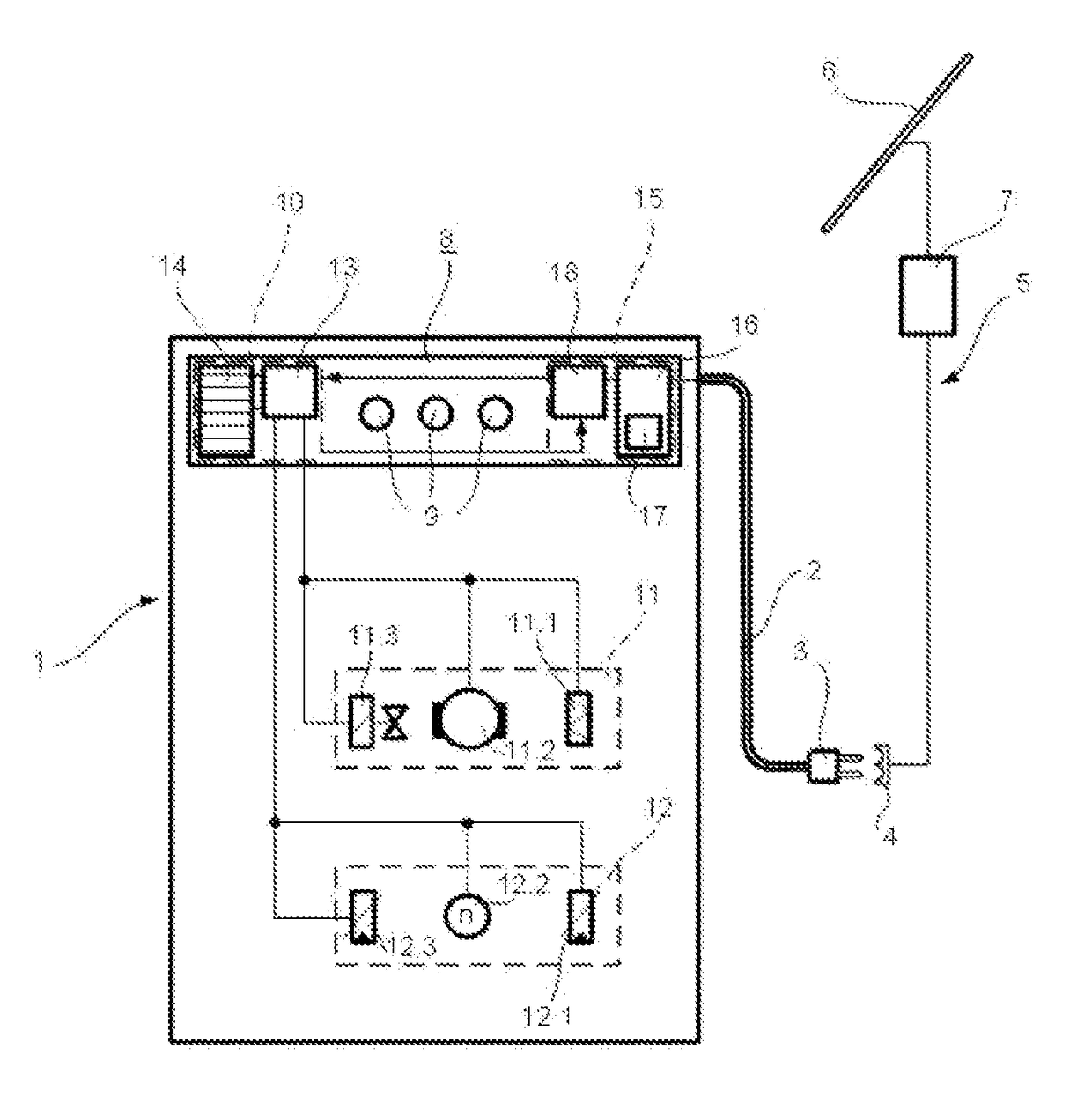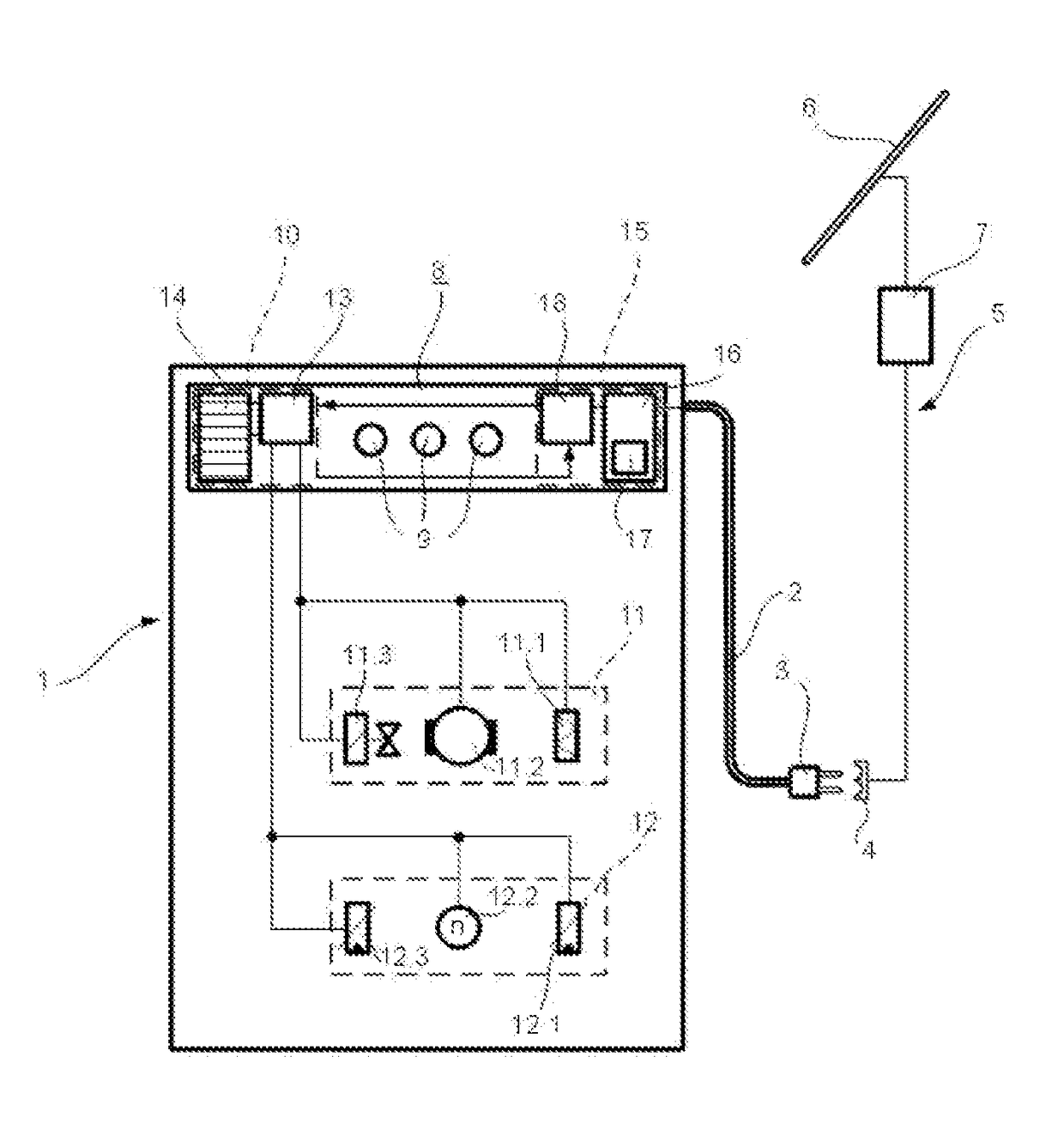Method for supplying an electric domestic appliance from a low voltage supply network and a domestic appliance suitable for carrying out said method
a low-voltage supply network and domestic appliance technology, applied in the integration of power network operation systems, emergency power supply arrangements, cleaning equipment, etc., can solve the problem of prolonging processing programs, and achieve the effect of reducing heat energy, reducing processing costs, and avoiding short-circuit switching
- Summary
- Abstract
- Description
- Claims
- Application Information
AI Technical Summary
Benefits of technology
Problems solved by technology
Method used
Image
Examples
Embodiment Construction
[0017]The domestic appliance 1 shown is able to be connected via a connecting lead 2 with a plug 3 to an outlet 4 of a low voltage power supply network 5—referred to below as the network 5—which essentially represents a voltage source 6—shown here schematically as a photovoltaic solar generator, but a wind generator system can also be used instead—and a transformer 7. The transformer 7, depending on requirements, can contain time control programs, voltage monitoring and smoothing devices, remote-control devices or the like. With the transformer 7 a power supply network 5 with protected extra low voltage is especially provided. It could however also be configured for transforming the DC voltage of the generator 6 provided into normal AC voltage of 230 V˜. The transformer 7 can however also—if necessary—contain an accumulator for collecting the harvested electrical energy or the transformer 7 can be connected downstream from the accumulator. The transformer 7 can be dispensed with if ...
PUM
 Login to View More
Login to View More Abstract
Description
Claims
Application Information
 Login to View More
Login to View More - R&D
- Intellectual Property
- Life Sciences
- Materials
- Tech Scout
- Unparalleled Data Quality
- Higher Quality Content
- 60% Fewer Hallucinations
Browse by: Latest US Patents, China's latest patents, Technical Efficacy Thesaurus, Application Domain, Technology Topic, Popular Technical Reports.
© 2025 PatSnap. All rights reserved.Legal|Privacy policy|Modern Slavery Act Transparency Statement|Sitemap|About US| Contact US: help@patsnap.com


